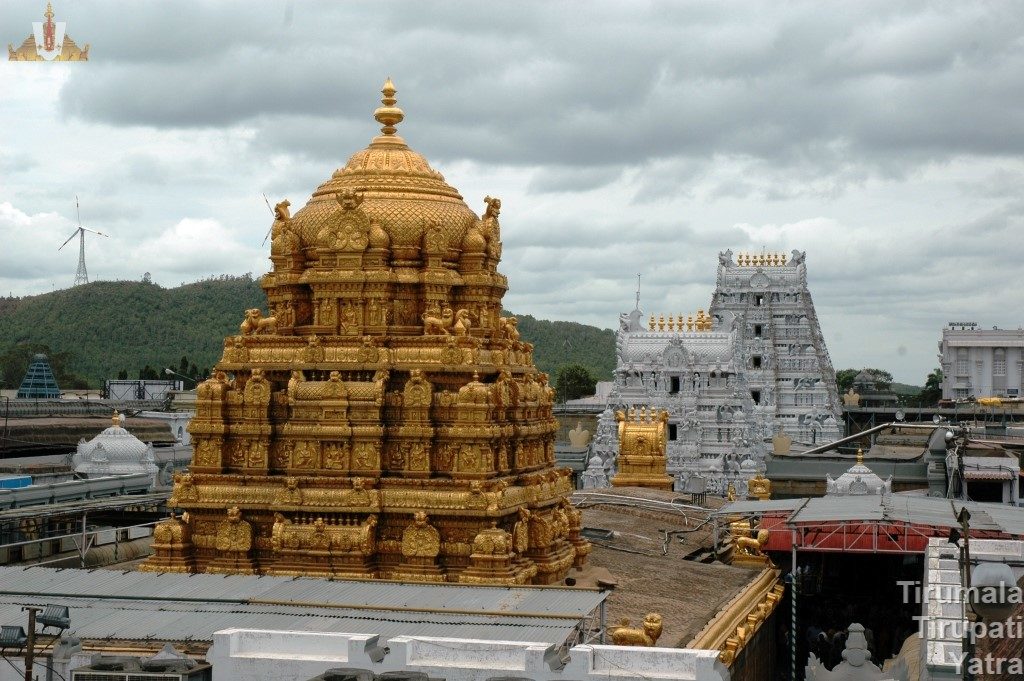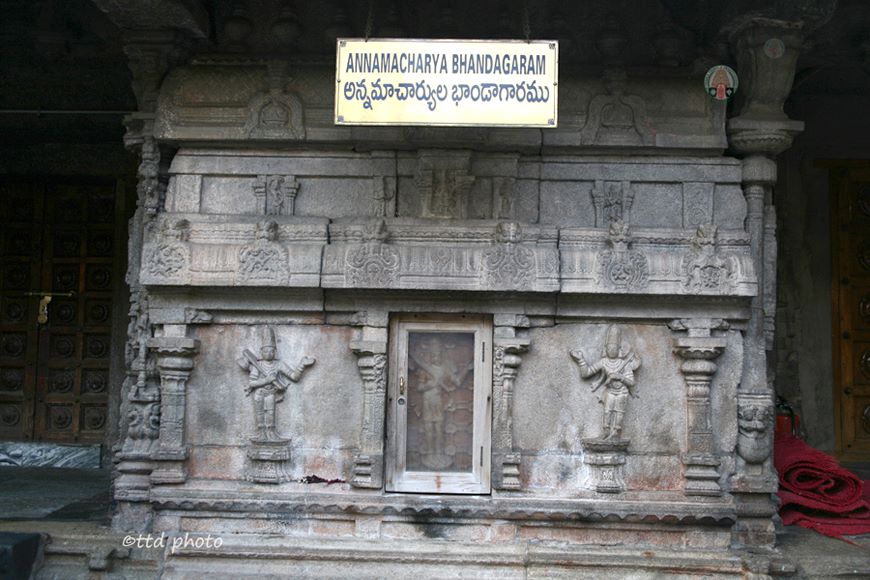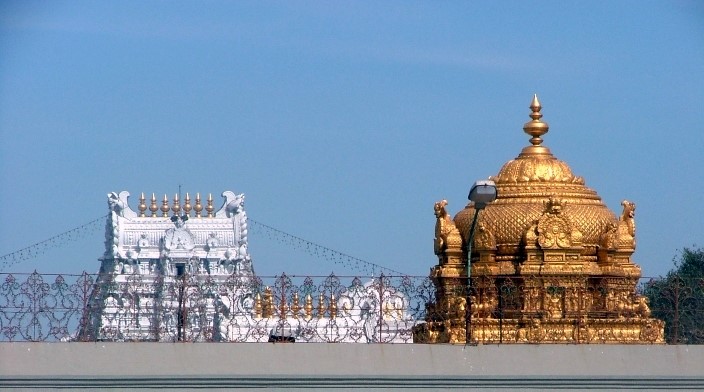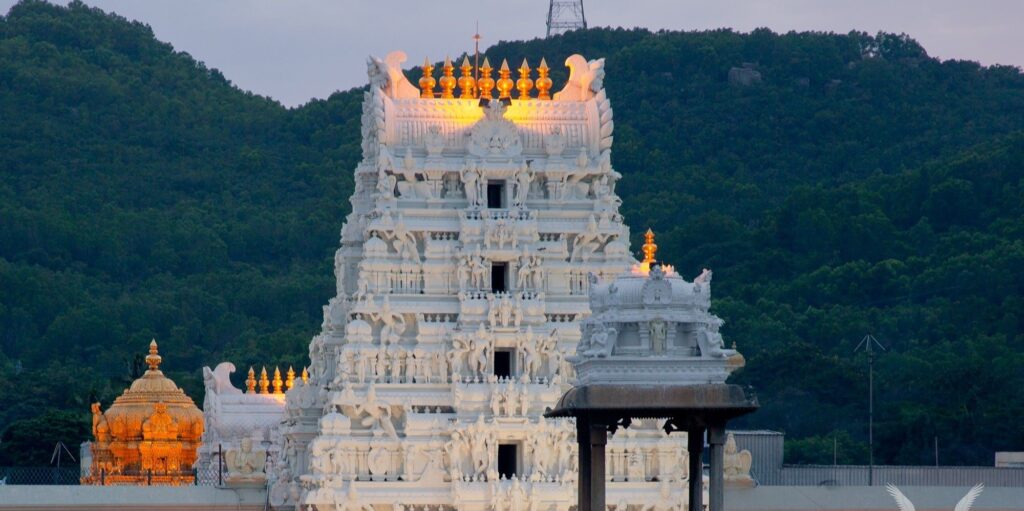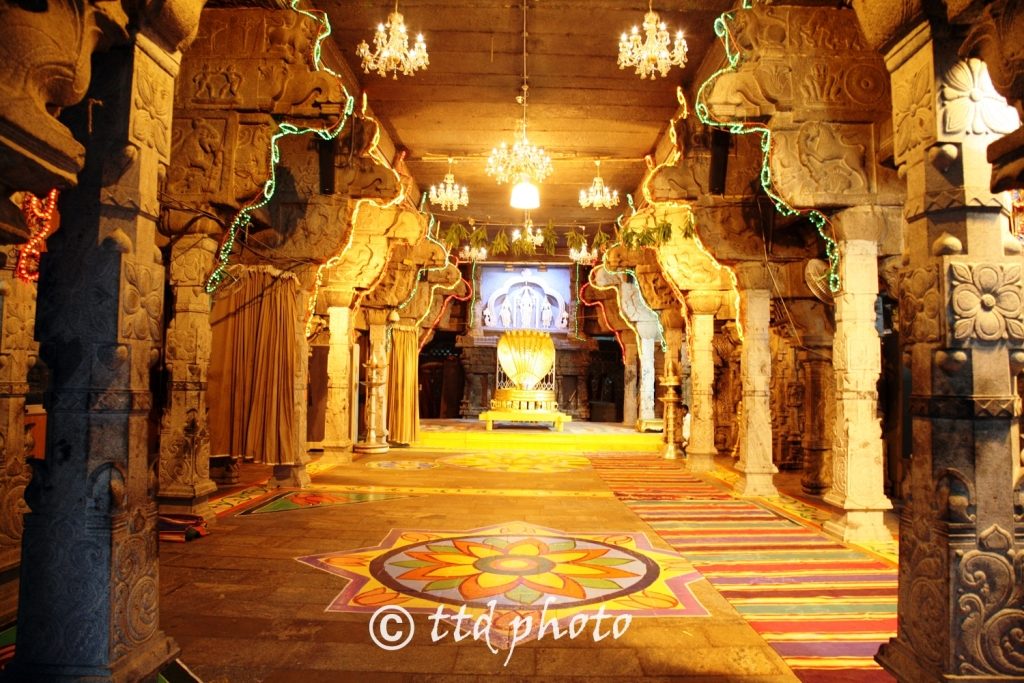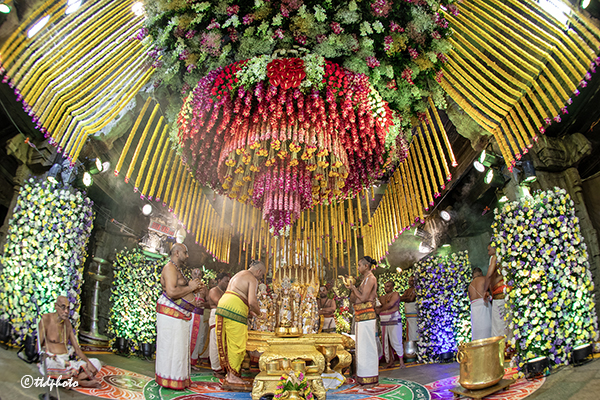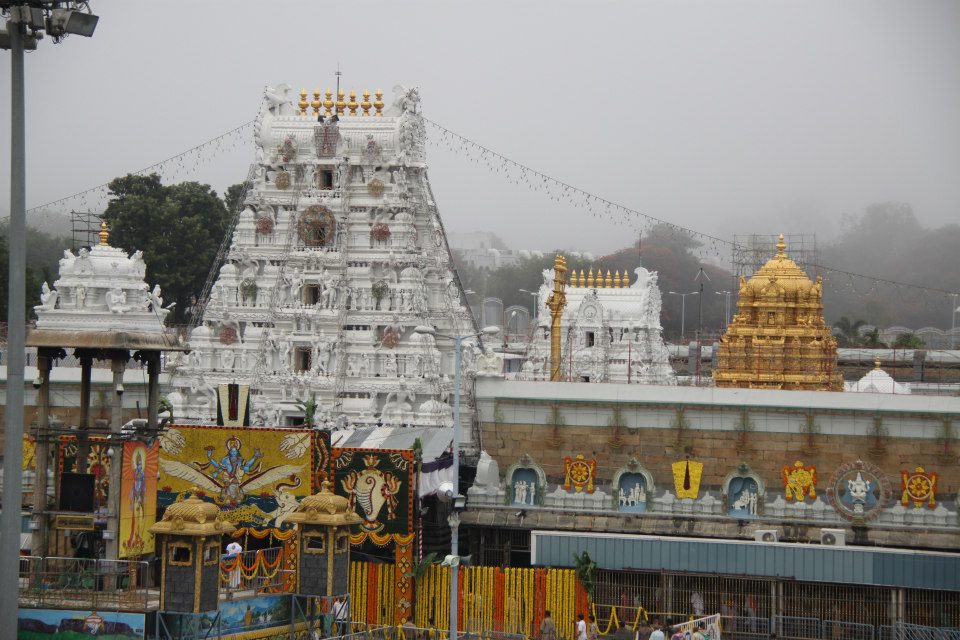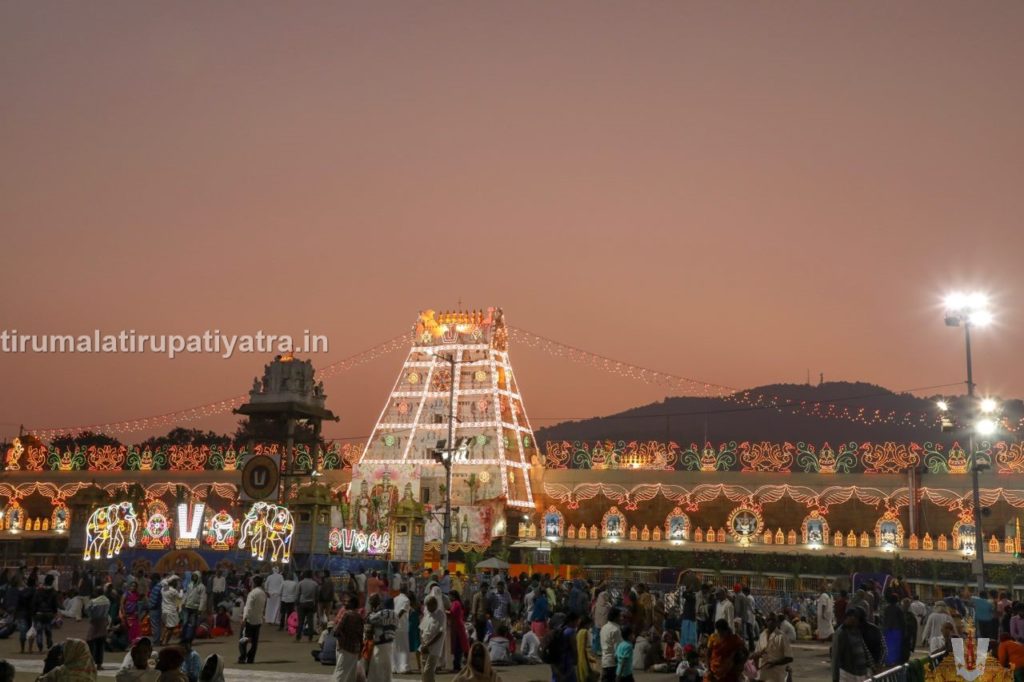Pancha Berams of Tirupati Balaji Lord SRINIVASA is the heavenly Wishing Tree (kalpa taruvu) to those who yearn for Him, gold to those who hold his hand, advance honorarium to those who worship Him, a diamond on hand to those who serve Him, the Ultimate God to those who conceive of Him, fulfiller of desires Read More
Category: Inside Tirumala Temple
In Lord Venkateswara’s dwelling place Tirumala of Venkatachala mountain, everyday auspicious things like Divine marriage, Inspiring spiritual festivities, Processions etc., Explore everything inside Tirumala temple.
Sankeerthana Bhandagaram – Inside Tirumala Temple
Sankeerthana Bhandagaram Adjacent to Sabhera’s room a south-facing room is there. This room has big pillars with beautiful carvings on them. This is known as Sankeerthana Bhandagaram. Some call this room by name Tallapaka Ara i.e., room. There is a board which says that this is Annamacharya Bhandagaram. This Bhandagaram (treasury) room has wooden doors. Read More
Sri Krishnadevaraya Mandapam – Tirupati Balaji Temple
Sri Krishnadevaraya Mandapam / Prathima Mandapam Abuting the main gateway i.e., inside, you will come across a sixteen-pillared lofty portico of 27″ x 25″ size. People call this portico by the name Krishnadevaraya Mandapam or Krishnaraya Mandapam. Some call this Prathima (idol) Mandapam also. This portico is constructed as per the Vijayanagara style of portico Read More
Sri Krishnaraya Mandapam – Tirupati Balaji Temple
Sri Krishnaraya Mandapam / Prathima Mandapam Abuting the main gateway i.e., inside, you will come across a sixteen-pillared lofty portico of 27″ x 25″ size. People call this portico by the name Krishnaraya Mandapam. Some call this Prathima (idol) Mandapam also. This portico is constructed as per the Vijayanagara style of portico construction. Amid this Read More
Ramulavari Meda (Rama’s Abode) – Tirupati Balaji Temple
Ramulavari Meda / Rama’s Abode As soon as you cross Snapana Mandapam there is a narrow 12″ x 10″ passage. This is known as Ramulavari Meda. Before 1262-65 A.D. the researchers believe that this was not there. They believe that this was a part of the present Vaikunta Pradakshina path. To enter Ramulavari Meda from Read More
Ranganayaka Mandapam (Ranganayaka’s Porch)
Ranganayaka Mandapam or Ranganayakula Mandapam or Ranga Mandapam Right opposite the house of mirrors (Addala Meda) towards the south of Krishna Raya Mandapam there is one elevated stone platform. A porch has been constructed. This porch is known as Ranganayaka Mandapam or Ranga Mandapam. This 108 feet long and 60 feet wide lofty carved pillared Read More
Sayana Mandiram (Lord’s bed Room)
Sayana Mandiram / Ardha Mandapam As you cross Ramulavari Meda you will enter into a 13 ½ ” by 13 ½” room. This room is called Sayana Mandiram i.e., Lord’s Bed Room. This is exactly in front of the Sanctum Sanctorum of Lord Venkateswara. This is also known by the name Ardha Mandapam. (A Moiety Read More
Snapana Mandapam (Mandapam of Holy Ablutions)
Snapana Mandapam As you enter through Golden doors you come across, not very much illuminated, a 27 feet quadrangular mandapam. This (Snapana Mandapam) has four pillars in the middle portion. Sculptured figures of Balakrishna, Yoga Narasimha, Sri Krishna Kaliya Mardhana, etc., can be seen on these pillars. It is known as “Tiruvilan Koil”, a Tamil Read More
Ghanta Mandapam (Thiru Maha Mani Mandapam)
Ghanta Mandapam The pillared entrance to the main temple is known as Ghanta Mandapam. Its exquisiteness is simply beyond description. Facing north, devotees enter into this mandapam. Behold here you come across some doors. Gods like Brahma and other deities, sages, and saints like Sanak Sananda’s patiently wait here to have the darshan of Lord Read More
Ankurarpana Mandapam – Tirupati Balaji Temple
Ankurarpana Mandapam / Ankur Arpana Mandapam Opposite the chief kitchen and towards the south of Bangaru Baavi, there is a mandapam. This is known as Ankurarpana Mandapam. Every year the Dasara Brahmothsavam is celebrated for ten days by Lord Venkateswara. The initiation of this Brahmothsavam starts from this Mandapam. Ankuram as we all known is Read More
